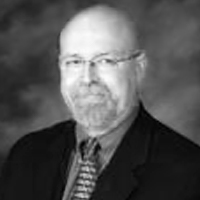Question
I would like to do testing for validating Baha in unilateral hearing loss patients. Could you suggest some validated test procedures useful for showing Baha's role in localization and speech in noise?
Answer
It is great that you are interested in validating Baha fittings in patients with SSD (single-sided deafness) or unilateral hearing loss. Since this is a bone conduction device, it is necessary to use Sound Field testing. First I would like to address the question of localization and how to verify this outcome. Since SSD involves one good hearing ear and the other with poor or no hearing, the issue of "True Localization" is a moot point. Since a Baha in the SSD configuration mimics a "trans-cranial routing of signal" the goal of localization is not possible due to the contribution of only one functioning cochlea. It is well know that this "loss of localization" is one of the major problems that SSD patients would like to overcome. There are no validated clinical test that I know of that can show a restoration of localization with a Baha in SSD. The SSQ or Speech, Spatial and Qualities of Hearing Scale by Gatehouse and Noble (2004) is a good self assessment scale that is used to measure patient observation and satisfaction. Many SSD patients that use Baha successfully report a return of "spatial awareness" which is beneficial and a good outcome for these patients. The use of a CROS aid (either Air Conduction or TranEar) will not restore localization due to the presence of only one normal functioning cochlea. The SSQ can work equally well in the evaluation of spatial hearing in these treatments as well.
A good tool for measuring and verifying good outcomes in the area of speech in noise performance can be obtained with the use of the Quick SIN test. Snapp and Telischi (2008) outline a recommended protocol for Baha Assessment and Verification with SSD patients using the Quick SIN test in sound field. This can be done pre and post application to measure and predict outcome. One of my favorite things about Baha as an implantable hearing solution is the capability to use a headband to evaluate the potential outcome of the Baha treatment before a patient must make a decision to have surgery. This is unique in the implantable hearing device arena.
References
Gatehouse, S., Noble, W. (2004). The Speech, spatial and qualities of hearing scale (SSQ). IJA 43(2):85 - 99.
Snapp, H., Telischi, F. (2008). A recommended protocol for BAHA assessment and verification for individuals with single-sided deafness. Audiology Today 20(4): 20 - 28.
George Cire is the Clinical Manager for Bone Anchored Solutions at Cochlear Americas in Englewood, CO. Dr. Cire received his Au.D from A. T . Still University, School of Health Sciences in Mesa, AZ. Dr. Cire has been working in the Audiology field for 29 years.

